Let’s demystify Amyotrophic Lateral Sclerosis
Patients with Amyotrophic Lateral Sclerosis (ALS) are often overlooked or misunderstood. Like the ALS dragon, they live among us, trying to keep their inner fire alive despite scepticism and misdiagnosis.
Together, we can make their experiences visible and ensure they receive the care they deserve.
What is ALS?
ALS is a neurodegenerative disease characterised by progressive, painless muscle weakness due to degeneration of motor neurons in the brain and spinal cord.1,2 This degeneration affects myelin—a sheet that helps transmit neuron signals—making the muscles linked to these neurons weak.3


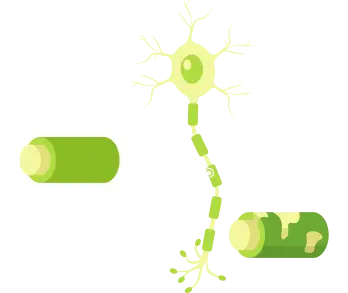
Above you can see a healthy myelin
And below is myelin affected by ALS
Rare but real
There are40,000ALS patients in Europe4
10% FAMILIAL ALS
with a family history, commonly associated with a mutated gene5
90% SPORADIC ALS
occuring without a family history5
40 identified genes
involved in ALS to date5
ALS represents 3.44-10.80 patients per 100,000 in Europe6
ALS is 1.5 times more common in men than in women5
ALS mostly affects people aged 45-80 years5
“Living with ALS means dealing with many daily challenges without being seen. It is difficult to learn how to use a walker or a power chair, sleep with a mask or make dietary changes—even interacting with others can be tough”.7
Let’s talk about symptoms

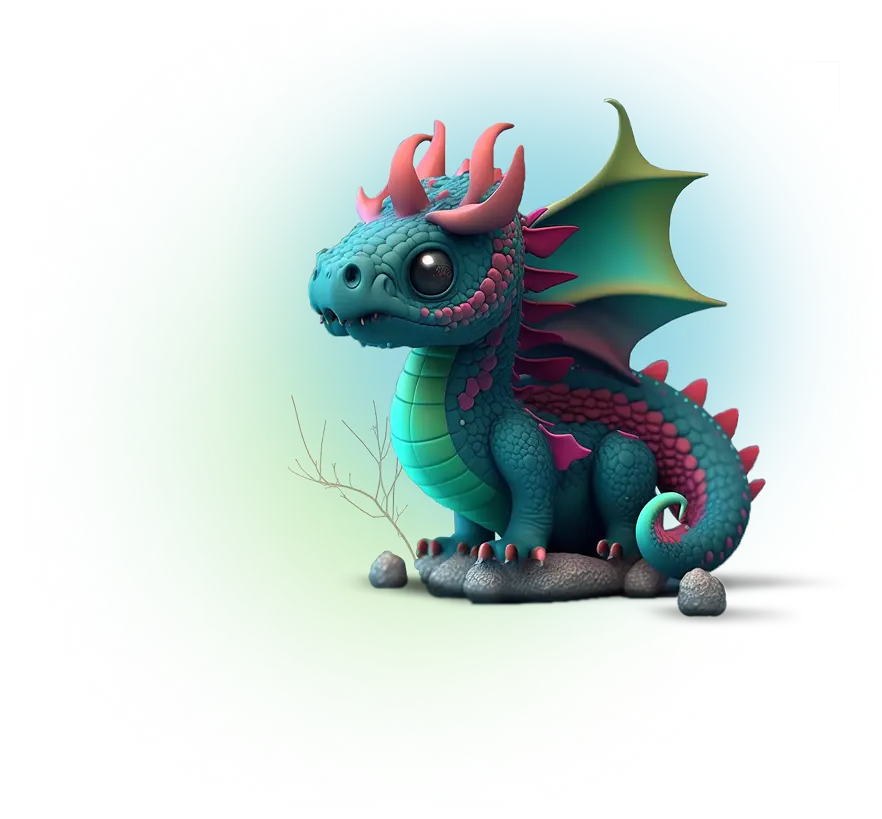
ALS symptoms include the gradual loss of the ability to:5
Speak
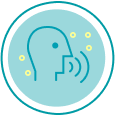
Swallow
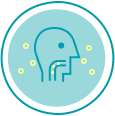
Breathe

Move
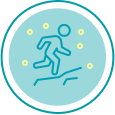
Grasp objects

Demystifying ALS matters
Here’s why:
The average life expectancy of people with ALS is 2-5 years.8
ALS generally progresses rapidly—but no two cases are the same.
Symptoms can vary greatly from person to person.
There is currently no cure or treatment available to halt the degenerative process.
Awareness is the key to more progress


Where we are:
Several treatments have been developed, and there continues to be research that explores strategies to slow or stop its progression.9
Awareness is the key to more progress


What can help:
Continuing to support ALS research.9
Personalising treatment for each case.
Awareness is the key to more progress


Not all dragons are the same


Providing personalised and multidisciplinary care is crucial for ALS patients
Take a holistic approach10
Invest in specialised ALS clinics10
Research disease-directed pharmacological therapies10
Provide nutritional support and respiratory care10
Explore multiple treatment approaches to ease the symptoms10
Offer care and support for caregivers and family members10
Discussing personalised prognosis shortly after being diagnosed may help people living with ALS and their caregivers regain control over their future and can facilitate planning, including future care.11



How much do you know about Amyotrophic Lateral Sclerosis?
Let’s find out how much you already know!
Take the quiz to find out!Seeing is believing – hear from people living with ALS
What is it like to live with ALS?
“I was diagnosed with Progressive Bulbar Palsy/ALS in October 2020, but had started losing my speech a year before my diagnosis. I continue to live one day at a time. Each day is different, but I make sure I have fun. I golf, walk my dogs, ride my bicycle and exercise every day. My doctor requested that I have a peg tube put in my stomach while I was healthy so I did and it’s great. Try to stay active, let your friends help you and let them know how you’re feeling. Friends can be a big help. I can say this because I have a great community of family and friends who look out for me. I can say I’m blessed.”
Person living with ALS
What are your thoughts on clinical trials for people living with ALS?
“I was diagnosed about 6 months ago. I have signed up for a trial and will begin in early May. If given a placebo, I understand I will be able to try the medication after a 6-month study. While I’m hoping to benefit, I also think that doing what I can to benefit the community is also important to help find a cure someday. I do have a limit in that I do not want to deal with side effects the likes of chemotherapy. Each day is a gift and feeling well, as best I can, is important, both to myself and to my spouse.”
Person living with ALS
What do family members and caregivers of people living with ALS think?
“I’m married and my husband was diagnosed January ’19. As things settle down from those first few months of shock, I would say the hardest thing for me is knowing when to step forward and help and when to step back and let him work something out. He’s still quite capable on most levels, but he’s a proud person and sometimes attempts things that can actually be detrimental. Separating the caregiver from the spouse roles takes more focus. It’s a dance we’re doing and will continue to do.”
Family member and caregiver
Join us in
#DemystifyingRareDiseases
At Ferrer, our purpose is to use business to fight for social justice. We aim is to provide significant and differential value to people suffering from severe conditions. For that reason, we have defined a clear global strategy to develop a portfolio of holistic solutions and innovative products capable of transforming the lives of people living with serious and debilitating diseases, especially in the field of pulmonary vascular and interstitial lung diseases.
In order to raise awareness about Pulmonary Hypertension, we launched the Phantasticals to reaffirm our commitment to people living with PH.
Because we know they exist, we can identify them, care for them and put all our efforts into helping them.
ALS frequently asked questions
90% of ALS cases are sporadic, meaning that they occur because of a spontaneous gene mutation, and it is only inherited in 10% of cases. To date, 40 ALS-causing genes have been identified.
While 10% of inherited cases are unavoidable, the risk of developing sporadic ALS can be reduced by maintaining a healthy lifestyle and minimising exposure to toxins.
The risk of developing sporadic ALS is quite low as it affects approximately 1 in every 400 people.12
Although ALS is a type of motor neuron disease (MND), the terminology “MND” does not exclusively refer to ALS. It also includes other disorders where motor neurons are damaged. Examples of other MND are spinal muscular atrophy or primary lateral sclerosis.
Updated 2024 guidelines from the European Academy of Neurology (EAN) contain useful information and recommendations to assist in the management of ALS.13,14 Patients and families should review these guidelines and discuss them with their doctor to ensure they are receiving optimal care:

Disease-modifying treatments

Multidisciplinary care

Communication

Nutritional support

Management of respiratory and other symptoms

Psychological and emotional support

Prevention of deep vein thrombosis

End of life
References
1. Goutman SA. Diagnosis and Clinical Management of Amyotrophic Lateral Sclerosis and Other Motor Neuron Disorders. Continuum (Minneap Minn). 2017;23(5, Peripheral Nerve and Motor Neuron Disorders):1332-59. 2. Goutman SA, Hardiman O, Al-Chalabi A, et al. Recent advances in the diagnosis and prognosis of amyotrophic lateral sclerosis. Lancet Neurol. 2022;21(5):480-93. 3. Moss KR, Saxena S. Schwann Cells in Neuromuscular Disorders: A Spotlight on Amyotrophic Lateral Sclerosis. Cells. 2025;14(1). 4. Chiò A, Logroscino G, Traynor BJ, et al. Global epidemiology of amyotrophic lateral sclerosis: a systematic review of the published literature. Neuroepidemiology. 2013;41(2):118-30. 5. Sharma R, Khan Z, Mehan S, et al. Unraveling the multifaceted insights into amyotrophic lateral sclerosis: Genetic underpinnings, pathogenesis, and therapeutic horizons. Mutat Res Rev Mutat Res. 2024;794:108518. 6. Wolfson C, Gauvin DE, Ishola F, et al. Global Prevalence and Incidence of Amyotrophic Lateral Sclerosis: A Systematic Review. Neurology. 2023;101(6):e613-e23. 7. ALS News Today. What is, or has been the biggest adjustment for you in living with ALS? Available at: https://alsnewstoday.com/forums/forums/topic/what-is-or-has-been-the-biggest-adjustment-for-you-in-living-with-als/. Last access: january 2025. 8. ALS Association. Understanding ALS. Available at: https://www.als.org/understanding-als. Last access: january 2025. 9. National Institute of Neurological disorders and Stroke (NINDS). Amyotrophic Lateral Sclerosis (ALS). Available at: https://www.ninds.nih.gov/health-information/disorders/amyotrophic-lateral-sclerosis-als. Last access: january 2025. 10. Shoesmith C, Abrahao A, Benstead T, et al. Canadian best practice recommendations for the management of amyotrophic lateral sclerosis. Cmaj. 2020;192(46):E1453-e68. 11. van Eenennaam RM, Koppenol LS, Kruithof WJ, et al. Discussing Personalized Prognosis Empowers Patients with Amyotrophic Lateral Sclerosis to Regain Control over Their Future: A Qualitative Study. Brain Sci. 2021;11(12). 12. ALS Therapy Development Institute. 1 in 400: how many people will get ALS? 2021. Available at: https://www.als.net/news/1-in-400-how-many-people-will-get-als/. Last access: january 2025. 13. Van Damme P, Al-Chalabi A, Andersen PM, et al. European Academy of Neurology (EAN) guideline on the management of amyotrophic lateral sclerosis in collaboration with European Reference Network for Neuromuscular Diseases (ERN EURO-NMD). Eur J Neurol. 2024;31(6):e16264. 14. eanNews. EAN published first ALS guideline in collaboration with European Reference Network dor Neuromuscular Diseases. 2024. Available at: https://www.eanpages.org/2024/04/04/ean-publishes-first-als-guideline-in-collaboration-with-european-reference-network-for-neuromuscular-diseases/. Last access: january 2025.
Created by:

Endorsed by:

